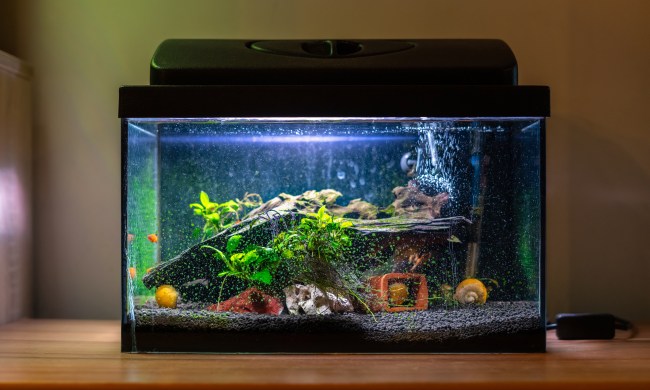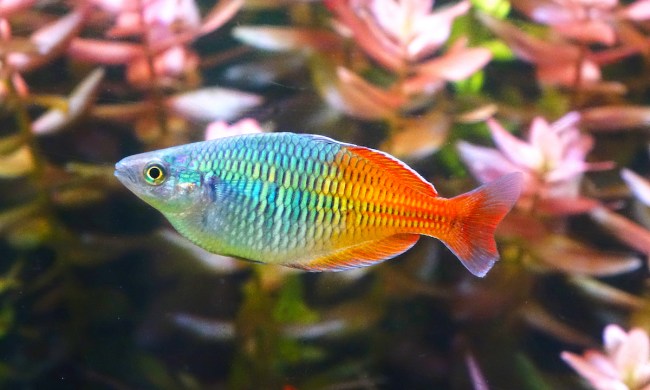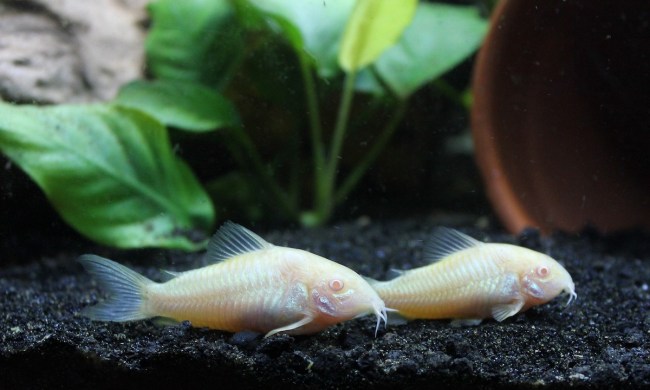Settling down with a cup of coffee in hand, you look forward to watching the action inside the aquarium. But then you notice that the water level in the tank seems to be lower than usual and your heart sinks. Could the tank be leaking? The good news is that depending on the problem, you likely won’t need to run out and buy a new aquarium. Read on for simple steps you can follow to repair a leaky fish tank.
How do you spot a leak in a fish tank?
In some cases, there will be obvious signs of where the tank is leaking, such as:
- water seeping through the sealant on the outside of the tank
- water collecting around the bottom of the tank
- water level in the tank being lower than normal
- a crack in the glass
In the case of slow leaks, the problem area may not be immediately obvious, and you may have to do some detective work. If the leak is up high on the tank, the water will reduce down to the level of the leak, narrowing down your search. If the water is pooling at the bottom of the tank, wipe it away; if it pools again immediately, the problem is likely at the bottom. Another good way to find the leak is to wrap a paper towel around the tank and look for wet spots on the paper.

Can you fix a leaky fish tank?
According to experts at Aquatic Warehouse, one of the most common reasons for fish tank leaks is a deterioration or a flaw in the silicone seal along the seams of the tank. These leaks can be fixed at home. Cracks in the glass can compromise the structural integrity of the tank and need to be addressed quickly. Aquatic Warehouse experts recommend hiring a professional to replace the entire panel.
If the leaking seal is towards the top of the tank, it’s possible to repair the damage without relocating your fish or emptying the tank. However, it can be challenging to keep residue from falling in the tank as you repair the leak. Additionally, if the sealant in an older tank is leaking in one area, it’s likely compromised in other areas as well. Resealing all of the seams will help prevent future leaks, say aquarium professionals.
While it might be tempting to only reseal the seams on the outside, it’s important to reseal inside seams also. This will reinforce the strength of the seal once the water is applying pressure to the joint.
Supplies you’ll need
- silicone sealant. Be sure to use a sealant that’s non-toxic to fish, such as Aqueon Aquarium Sealant or Loctite Clear Silicone Waterproof Sealant.
- caulking gun
- a straight razor blade
- old rag
- acetone or isopropanol
- a roll of masking tape
Follow these steps to repair your leaking fish tank
- Safely relocate your fish and aquarium décor.
- Unplug all power to the aquarium.
- Drain, clean, and dry the tank.
- Use the razor blade to remove the old sealant.
- Apply isopropanol or acetone to the rag and thoroughly clean every seam. This will help the silicone to bond better.
- Experts at Ohio Fish Rescue recommend using masking tape on each side of the seams to help follow a straight line when applying the sealant.
- Use the caulking gun to apply a new bead of silicone along the seams on the inside and outside of the tank.
- Dip your finger in water and run it over the beading to smooth it out, making sure to fill any gaps. Don’t delay with this step, as the caulking will develop a skin, making it difficult to achieve a nice finish.
- Remove the tape immediately to avoid damaging sealant once it dries. Sealant typically takes between 24 and 48 hours to dry completely.
- Once you’ve waited the required length of time, fill the tank with water. Experts at Ohio Fish Rescue say that if the tank holds water for up to three days without leaking, then it’s safe to return your fish to their home.
How do you stop a fish tank from leaking?
Following are steps you can take to help prevent your fish tank from leaking.
Be careful when cleaning the glass
It’s not unusual for hobbyists to damage sealant when cleaning glass with blade scrapers. To avoid this problem, use a softer product such as an old toothbrush or the Imagitarium Glass Aquarium Scrubber from Petco to clean the glass. This product helps you to get into corners without damaging the sealant.
Keep the aquarium level
When an aquarium isn’t level, it puts stress on the seams over time and can cause the tank to leak. A rubber mat or foam pad under the aquarium will help keep it level.
Exercise caution when moving your tank
Regardless of the size, you should never lift or transport an aquarium with water or gravel in it, according to experts at Aqueon. This can damage the aquarium and compromise the seals, leading to leaks.
Aquarium leaks can happen, and it’s important to be prepared. For example, do you have a safe temporary home for your fish while you’re repairing the tank? Joining forums such as reef2reef is a great way to get ideas on how to prepare for aquarium emergencies. In the end, what matters is that you have a go-to plan so your fish are safe while you deal with the problem.



